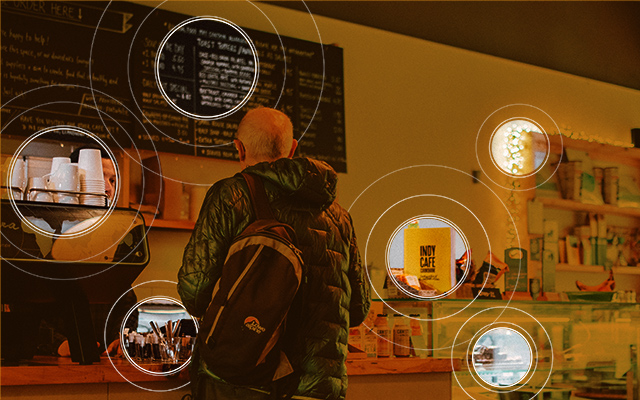Experience Design Builds A More Functional Future

I was a Guest Contributor for HOW Design in 2019 and this article was posted to their website in March 2019. HOW has since filed for bankruptcy, so I am sharing the article here so it can find its audience once more.
When it comes to coffee shops, every experience is different. Perhaps one coffee shop uses in-store signage that’s hand-written and serves drinks in mismatched ceramic coffee cups. Maybe another other coffee shop is an international franchise whose in-store experience is pleasant and consistent but somewhat unremarkable.
What about airline experiences? An airline’s app that features fun copywriting, interesting travel images, and contests is fresh, interesting, and engaging. Airline uniforms in bright colors and textured fabrics are certainly different than the traditional navy colored suit and neckerchief we’re used to.
In both of these situations, though, the experiences made possible by purposeful design sets each business apart—making it much more likely that customers will come back.
An Important Investigation
Designing for experiences has been a source of much interest over the last 20 years. In their 1999 book The Experience Economy, economists Joseph Pine II and James H. Gilmore presented that the most effective way companies could differentiate themselves in the market was through offering experiences that people value. In 2000, User Experience Designer Jesse James Garrett introduced The Elements of User Experience, a model stating that users’ needs, goals, and values just as important as website functionality.
Business innovation expert Clayton Christensen summarized decades of work with multinational corporations in his 2016 book, Competing Against Luck: The Story of Innovation and Customer Choice. In this book, Christensen and co-authors concluded that creators should focus on understanding people’s experiences with products and services. While titles like graphic, industrial, interaction, or service designer describe designers’ expertise based on what they create, experience designer is a title that more accurately reflects the future of design.
Experience Design Desires Understanding
Experience Design considers what people think, feel, and do when they complete activities. Every activity is different because people and situations are complex. For example, checking a child in at a chaotic children’s hospital emergency room can involve detailed tasks like reading and signing papers. Designers can create materials that will make this task easier.
Experience Designers, however, would take into account that even just performing this activity can spark intense emotions. Parents and patients often experience fear and anxiety when it comes to medical care, especially in a high-intensity place like a hospital emergency room. An Experience Design approach in this scenario could produce redesigned forms that are easier to complete but it could also lead to creating quiet, comfortable spaces for check-in or cellphone privacy booths for parents who need to coordinate care for other children. Regardless of the design outcomes, the goal in this scenario is to help people get the care they need while reducing emotional discomfort.
Designing for experiences can involve designing lighting, directing sound design, creating print materials, or other multi-sensory design outcomes. Experience Design brings together teams that are willing to collaborate and cross-disciplinary boundaries. Some Experience Designers are experts in traditional design such as graphic and interaction design. Others possess expertise in areas like ergonomics, cultural anthropology, linguistics, and social psychology.
Going for Goals
Experience Design has an important goal: creating valuable and meaningful experiences that align with the diverse needs, values, and preferences of people all over the world. Careful research is required to understand these needs and values, and this research goes beyond just demographics and buying behaviors. Experience Designers must discover real and perceived factors that affect people when they use design in different situations, and the best method to uncover meaning is by letting people tell their stories.
Through research, collaboration, and partnership across disciplines and expertise, design teams innovate and test products, services, and systems that are relevant, valuable, and meaningful—all because people deserve better experiences.